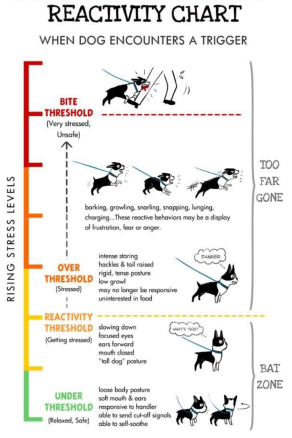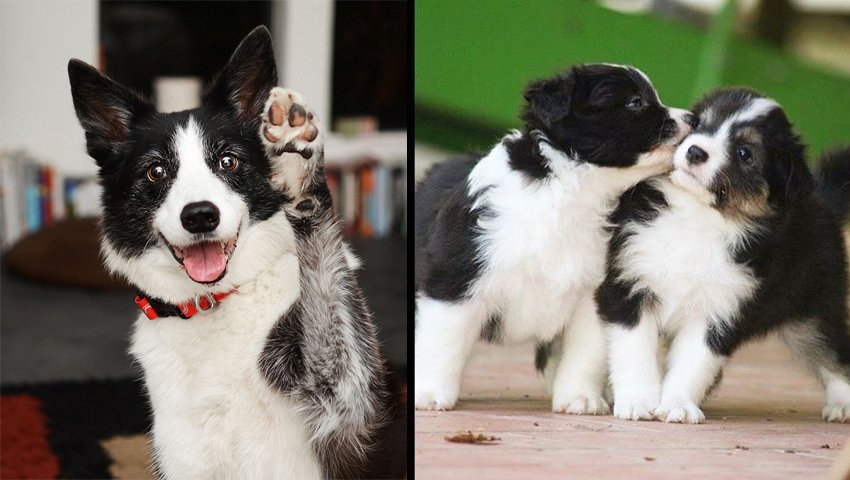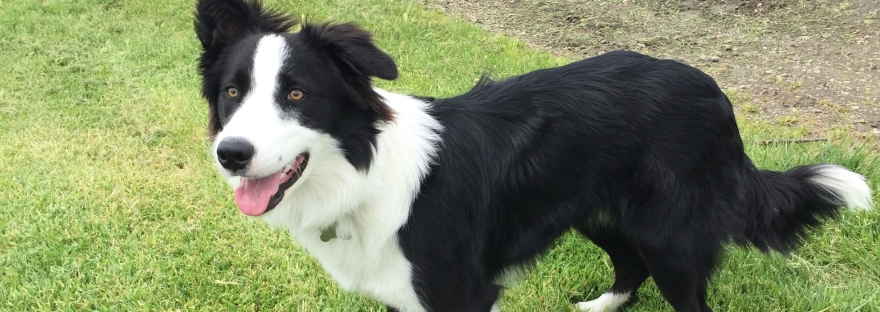Have you ever wondered what your Border Collie is trying to tell you with their various barks, whines, and body language? It’s like they have their own secret language that only they understand. Well, in this article, we’re going to decode that language and help you better understand your furry friend.
Communication is key in any relationship, and the same goes for the bond between you and your Border Collie. By understanding their signals, you can better respond to their needs and strengthen your connection with them. From the position of their ears to the wag of their tail, every movement and sound they make has a purpose. In this article, we’ll break down the different signals your Border Collie might use and what they mean. So, whether it’s a playful bark or a pleading whine, after reading this article, you’ll have a better grasp on what your Border Collie is trying to communicate. Stay tuned!
Introduction
Border Collies are a remarkable breed known for their intelligence, agility, and stunning appearance. If you’re considering bringing a Border Collie into your family, it is essential to understand their language and signals. By learning to communicate effectively with your Border Collie, you can strengthen your bond and ensure a harmonious relationship. In this article, we will explore the fascinating language of Border Collies, covering verbal communication, body language, facial expressions, tail wagging, and more. So, let’s dive into the world of Border Collie signals and discover how to understand and interpret them.
The History of Border Collies
Border Collies have a rich history that dates back to the 18th century. Originating from the border regions between England and Scotland, these exceptional dogs were traditionally bred for herding sheep. Their precision, agility, and natural instincts made them superb herders, capable of controlling livestock with remarkable efficiency. Over time, Border Collies became renowned for their versatile skills and incredible work ethic. Today, they are not only beloved working dogs but also popular companions and competitors in various canine sports and activities.

Physical Characteristics of Border Collies
Border Collies are medium-sized dogs with an athletic build. They typically stand between 18 and 22 inches tall at the shoulder, and their weight usually ranges from 30 to 55 pounds. Their coats come in a variety of colors, including black and white, red and white, blue merle, and tri-color. The breed’s most striking feature is their alert and intelligent expression, which is accentuated by their expressive eyes and well-proportioned head. Border Collies possess a sleek double coat that acts as protection against both cold and wet weather conditions.
Intelligence and Trainability of Border Collies
When it comes to intelligence, Border Collies are widely considered one of the most intelligent dog breeds. Their ability to learn quickly, problem-solve, and retain information makes them highly trainable. They thrive on mental stimulation and are happiest when engaged in tasks that challenge their intellect. Border Collies excel in various dog sports, including agility, herding trials, obedience, and even search and rescue. However, their extraordinary intelligence also requires proper mental stimulation and outlets for their energy to prevent behavioral issues.

The Importance of Understanding Border Collie Language
To develop a strong bond with your Border Collie, understanding their language is crucial. By grasping their signals, you can effectively communicate your expectations, read their needs, and respond accordingly. This mutual understanding fosters trust, reduces stress, and strengthens the connection between you and your furry friend.
Why Understanding Signals is Crucial
Border Collies rely on signals to convey their emotions, intentions, and desires. Misinterpreting these signals can lead to miscommunication, anxiety, and frustration for both you and your dog. By learning to decipher their language, you can respond appropriately and establish a solid foundation of clear communication.

Benefits of Communicating Effectively with Your Border Collie
Effective communication with your Border Collie brings a multitude of benefits. Firstly, it enhances your ability to train them and teach them new commands and behaviors. By speaking their language, you can establish clear expectations and help them understand what you want from them. Additionally, understanding their signals allows you to recognize when they are stressed, anxious, or in discomfort, enabling you to address their needs promptly and provide appropriate support.
Verbal Communication: What Your Border Collie is Trying to Tell You
Verbal communication plays a significant role in understanding your Border Collie’s signals. While they don’t possess the same range of vocalizations as some other breeds, they have distinct barks, growls, and whines that convey specific messages.
Interpreting Different Barks
Border Collies have different types of barks, each carrying a unique meaning. A sharp, high-pitched bark often signifies excitement or alertness. It may indicate that your Border Collie has spotted something of interest or is eager to play. On the other hand, a deep, low bark accompanied by growling may indicate a warning or protection response. It is essential to pay attention to the context in which the bark occurs to interpret its message accurately.
Understanding Growls and Whines
Growling is a vocalization that can vary in tone and intensity. While growling is often associated with aggression, Border Collies may also growl to express frustration, fear, or discomfort. It is crucial to observe their body language and the situation they are in to determine the underlying cause of the growling. Similarly, whining can signal various emotions, including excitement, anxiety, or the need for attention. By paying attention to the accompanying body language and context, you can better understand the message behind the whining.
Recognizing Vocal Expressions for Joy, Fear, and Distress
Border Collies can also express joy, fear, and distress through their vocalizations. When a Border Collie is happy, they may emit high-pitched, playful barks or yips. These vocal expressions often coincide with energetic movements and a wagging tail. Conversely, fear or distress can be conveyed through whining, whimpering, or yelping sounds. It is critical to pay attention to the entire picture, including body language, to accurately interpret the emotions your Border Collie is experiencing.

Body Language: Decoding Border Collie Signals through Posture and Movements
Border Collies are highly expressive dogs, and their body language provides valuable insights into their emotions and intentions. By understanding their postures and movements, you can gain a deeper understanding of what they are trying to convey.
Postures and Gestures for Different Emotions
Border Collies have a myriad of postures and gestures that indicate different emotions. When your Border Collie is relaxed and content, they will likely stand with a neutral, balanced posture. Their body will appear loose and supple, and their tail will wag gently from side to side. On the other hand, when Border Collies feel threatened or fearful, they may lower their body, tuck their tail between their legs, and flatten their ears against their head. These signs indicate that your dog is trying to make themselves appear smaller and less imposing.
Importance of Tail Movements
The position and movement of a Border Collie’s tail provide significant cues about their emotional state. A wagging tail generally indicates happiness and excitement. However, the speed, height, and direction of the wag can also convey different messages. A fast, high tail wag often indicates high arousal or anticipation, while a slow, low wag may signal caution or uncertainty. It is essential to consider the overall body language and context when interpreting tail movements.
Significance of Eye Contact and Ear Position
Eye contact and ear position are essential elements of a Border Collie’s body language. Direct eye contact from your Border Collie indicates focus and attentiveness. They may be observing their surroundings or waiting for your command. However, if your Border Collie avoids direct eye contact or averts their gaze, it may indicate submission or discomfort. Similarly, the position of their ears provides valuable cues. Erect, forward-facing ears indicate attentiveness and alertness, while backward or flattened ears often indicate fear or apprehension.
Facial Expressions: Reading Your Border Collie’s Emotions
The facial expressions of Border Collies can reveal a wealth of information about their emotions. By observing their eyes, muzzle, and other facial features, you can gain insights into their current state of mind.
Recognition of Expressive Eyes
Border Collies have expressive eyes that can communicate a range of emotions. When your Border Collie is relaxed and content, their eyes will appear soft and relaxed. Dilated pupils can indicate excitement or arousal, while constricted pupils may suggest fear or stress. Additionally, a direct and steady gaze often signifies focus or dominance, while averted or squinted eyes may indicate submission or unease.
Meaning of Different Facial Muscle Movements
The movements of your Border Collie’s facial muscles can provide further clues about their emotions. For example, a raised upper lip, displaying a portion of their teeth, can signal aggression or a warning. Conversely, if your Border Collie’s mouth is relaxed and slightly open, it indicates a calm and content state. Wrinkles or furrowed brows can suggest confusion or concentration, while a relaxed, smooth forehead indicates relaxation.
Quiet Communication through Licks and Yawns
Border Collies often communicate subtly through licks and yawns. A gentle, friendly lick can be a gesture of affection, respect, or an invitation to play. Yawning is often a sign of relaxation or tiredness. However, excessive yawning can also indicate stress or anxiety. By paying attention to the context and accompanying body language, you can understand the message your Border Collie is trying to convey through these subtle actions.

Tail Wagging: Understanding the Various Messages
Tail wagging is a universal sign of canine communication, and Border Collies use their tails to convey a wide range of messages. Understanding the different types of tail movements can help you interpret your Border Collie’s emotions accurately.
Different Types of Tail Movements
A wagging tail generally indicates a positive emotional state. However, the specific characteristics of the tail wag can convey different messages. A quick, vigorous wag with the tail held high usually signifies high excitement or arousal. It may indicate that your Border Collie is eager to engage in play or is anticipating something exciting. Conversely, a slow, gentle wag with the tail held low often indicates a more relaxed or cautious state.
Tail Position and Emotional States
The position of your Border Collie’s tail provides additional insights into their emotional state. A high, raised tail generally indicates confidence and a positive emotional state. When your Border Collie carries their tail at a neutral level, it suggests relaxation and contentment. However, a tucked tail indicates fear or submission. Paying attention to the positioning and movement of your Border Collie’s tail in combination with other body language cues will help you decipher the meaning behind their signals accurately.
Vocalization and Body Language: Combining Signals for Clear Communication
Border Collies use a combination of vocal cues and body language to communicate effectively. By understanding how these signals intertwine, you can gain a more comprehensive understanding of what your Border Collie is trying to convey.
Using Vocal Cues along with Body Language
When interpreting your Border Collie’s signals, it is essential to consider both vocal cues and body language simultaneously. For instance, a low-pitched growl coupled with forward body posture and stiff movements typically indicates a warning sign. On the other hand, a high-pitched bark combined with a wiggling body and a wagging tail signifies excitement or happiness. By paying attention to the harmony between vocalizations and body language, you can better understand your Border Collie’s intentions and emotions.
Examples of Combined Signals in Different Situations
The combination of vocal cues and body language can vary depending on the situation your Border Collie is in. For example, if your Border Collie wants to play, they may bark in a high pitch while jumping and wagging their tail vigorously. In contrast, if they are feeling anxious or fearful, they may emit a low growl or whine while crouching low to the ground and flattening their ears. By carefully observing and interpreting these combined signals, you can respond appropriately and address your Border Collie’s needs effectively.
Common Miscommunications: Pitfalls to Avoid
While understanding Border Collie signals is essential, it is equally important to be aware of common miscommunications that can occur. Misinterpreting these signals can lead to misunderstandings and potentially detrimental outcomes.
Misinterpreting Border Collie Signals
Misinterpreting Border Collie signals can arise from several factors, including lack of knowledge or experience, misreading body language cues, or projecting human emotions onto your dog. It is important to educate yourself on Border Collie language and observe their behavior objectively to avoid misunderstandings.
Common Mistakes in Handling Communication Breakdowns
Communication breakdowns can occur even with the best intentions. It is crucial to recognize and rectify these mistakes to maintain a healthy and effective line of communication with your Border Collie. Some common mistakes include ignoring or dismissing vocal cues, misinterpreting aggression as playfulness, or failing to address underlying causes of stress or anxiety.
Building a Strong Communication Bond with Your Border Collie
Building a strong communication bond with your Border Collie is essential for a fulfilling relationship based on trust and understanding. Here are some important considerations to strengthen your communication with your furry friend.
Importance of Bonding and Trust
Establishing a strong bond and trust with your Border Collie is the foundation for effective communication. This can be achieved through positive reinforcement training, spending quality time together, and providing a safe and nurturing environment. When your Border Collie feels secure and valued, they will be more receptive to your commands and communication cues.
Effective Training Techniques for Clear Communication
When training your Border Collie, it is crucial to use positive reinforcement techniques and clear communication. Reward-based training methods, such as treats, praise, or play, encourage your Border Collie to repeat desired behaviors. Use consistent verbal and non-verbal cues to enhance their understanding and reinforce the connection between commands and actions.
Socializing Your Border Collie: Understanding Canine Body Language
Understanding canine body language is not only essential for communicating with your Border Collie, but also for socializing them with other dogs. Recognizing the signs of aggression and fear in other dogs can help you ensure positive interactions and prevent potential conflicts.
Recognizing Signs of Aggression and Fear in Other Dogs
By observing other dogs’ body language, you can identify signs of aggression or fear, allowing you to act accordingly. Raised hackles, stiff body posture, direct eye contact, and a deep, low growl are common signs of aggression. Conversely, crouched body posture, tucked tail, and averted gaze often indicate fear or submission. Monitoring these signals and intervening when necessary can prevent potentially dangerous situations.
Creating Positive Interactions with Other Canines
Creating positive interactions between your Border Collie and other dogs is crucial for their social development. Early socialization with other well-behaved dogs helps your Border Collie learn appropriate behavior and develop healthy relationships. Encourage positive interactions through controlled introductions, rewarding good behavior, and monitoring their body language for signs of comfort or distress.
Environmental Factors: Impact on Border Collie Communication
Understanding the impact of the environment on Border Collie communication is essential for effective interaction, both indoors and outdoors. Different settings may require adjustments in your communication strategies to ensure clear understanding.
Understanding the Role of Environment
The environment plays a significant role in how your Border Collie communicates and responds. Indoor settings may have specific challenges, such as limited space or distractions, which can affect their attention and focus. Outdoor environments introduce additional factors, such as weather conditions, noises, and unfamiliar stimuli that may influence their behavior and communication.
Adjusting Communication Strategies in Different Settings
To effectively communicate with your Border Collie in various settings, it is crucial to adapt your strategies accordingly. For example, in a noisy outdoor environment, you may need to use visual cues and gestures more than verbal commands. Similarly, in a crowded indoor space, you can use treats or toys as rewards to reinforce positive behavior when verbal reinforcement may be less effective.
Handling Behavioral Problems: Using Communication to Address Issues
Clear communication is a valuable tool for addressing behavioral problems in your Border Collie. By understanding their signals and addressing underlying causes, you can help your furry friend overcome challenges and develop healthier behavior patterns.
Dealing with Separation Anxiety and Excessive Barking
Separation anxiety and excessive barking are common behavioral problems in Border Collies. To address separation anxiety, gradually acclimate your dog to being alone, provide mental stimulation in the form of toys or puzzles, and establish a predictable routine. Excessive barking can be addressed through redirecting their attention, teaching the “quiet” command, and providing alternative outlets for their energy.
Addressing Aggression and Fear-Based Behaviors
Addressing aggression and fear-based behaviors requires a comprehensive approach that includes clear communication, positive reinforcement, and professional guidance if necessary. Identifying triggers or underlying causes is crucial for implementing appropriate training techniques and developing a behavior modification plan. It is important to consult with a qualified professional to ensure the safety and well-being of both your Border Collie and those around them.
Conclusion: Enhancing the Bond through Understanding
Understanding the language of Border Collies is an ongoing process that requires patience, observation, and a genuine desire to communicate effectively with your dog. By learning to interpret their signals, you can develop a stronger bond, prevent misunderstandings, and address their needs more effectively. The language of Border Collies is intricate and nuanced, but by dedicating time and effort to understanding it, you can strengthen your relationship and provide a fulfilling life for your beloved Border Collie. So, take the time to listen and learn the language of your Border Collie, and you will be rewarded with a lifetime of companionship, loyalty, and love.